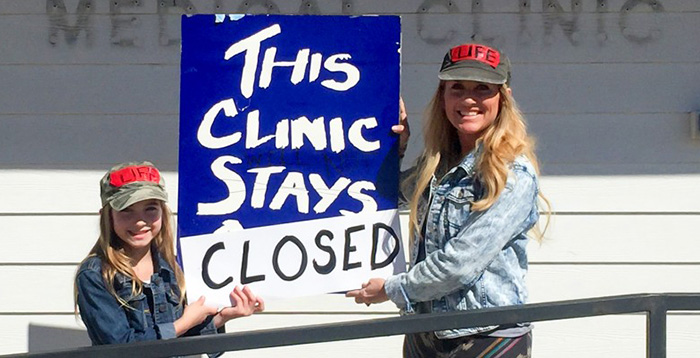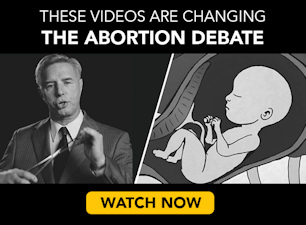Do you hear that? It’s the sound of a narrative beginning to crack because its advocates have saddled it with far too much weight.
At FiveThirtyEight, Madeleine Schwartz writes that, despite the ongoing chorus of ‘extreme anti-abortion laws are forcing abortion clinics to close,’ “abortion clinics in blue states are closing, too.”
As the most significant example, she notes that despite the fact that California laws are so extremely pro-abortion that it’s the only state to which NARAL gives an A+, twelve abortion facilities have shut down there since 2011.
And while less extreme, the overall picture is still striking:
According to Nikki Madsen, executive director of the Abortion Care Network, a national association for independent abortion care providers, for every three independent abortion clinics in her network that close in more conservative states, about two have closed in more liberal states over the past five years. She broadly defines these more liberal states as those that offer Medicaid funding for abortion, almost all of which voted for President Obama in the 2012 election.
Though rare, such admissions aren’t completely unprecedented. Last November, we covered a similar article from the Guardian, which went so far as to acknowledge that “of more than 50 clinics that closed for good in 2014,” a “little more than half were located in blue states.”
The natural takeaway from this news is that abortion seems to be a less in-demand commodity than the myths of so many women eventually needing it would have you believe. So like the Guardian piece, Schwartz explores a number of explanations for the decline, and in fact they’re largely the same explanations: costs being hard to cover while trying to keep prices low, difficulty getting timely reimbursements for the “medically necessary” (actually unnecessary) abortions Medicaid does cover, and Planned Parenthood’s most self-serving, that increased contraception is to thank for fewer women seeking abortions.
You can read the previous piece for a general look at why those reasons are overrated, so here let’s focus on a couple observations that hopefully get to the heart of the matter.
While simple cost factors undoubtedly play a role, they’re also factors in the pro-life states demonized as “forcing” facilities to close, so if abortion regulations really are as burdensome as they say, the difference between closings should definitely be more dramatic than a 1:1 ratio in 2014, with abortion-friendly states even edging out pro-life ones.
So why isn’t it? I believe it boils down to the simple fact that “contraception did it” doesn’t square with the evidence. We’ve been pointing out for years that birth control is already cheap enough and so widely accessible that inability to obtain it can’t plausibly be a large enough factor to change the direction of America’s pregnancy rates anymore. And sure enough, it isn’t. I once again defer to pro-life researcher extraordinaire Michael New, who first details the evidence that teens actually are having less sex in the first place, but more significantly that the contraception push has backfired spectacularly:
A 2003 Guttmacher Institute study showed that contraception use and abortion rates rose simultaneously in several countries. A 1996 Quarterly Journal of Economics Study, which was co-authored by Federal Reserve chair Janet Yellen, found that the advent of the birth-control pill led to more sexual activity and more unintended pregnancies. And a University of Michigan study analyzed what happened when the 2005 Federal Deficit Reduction Act led to a sharp increase in the price of birth-control pills at college health centers. It found that there were statistically significant decreases in both the frequency of sexual intercourse and the number of sex partners. The unintended-pregnancy rate remained about the same.
And:
While surveys do find that contraceptive use is increasing, the unintended pregnancy rate has remained stable — and by some measures has actually increased since the mid 1990s. A better explanation for the abortion decline is that a smaller percentage of unintended pregnancies ended in abortion. According to data from the Guttmacher Institute, the percentage of unintended pregnancies ending in abortion fell from 54 percent to 40 percent between 1994 and 2008.
Last August, Live Action’s Susan Michelle also looked at the numbers and found:
In 2010, the percentage of pregnancies that ended in abortion was 17.92% in 2010, and by 2013 it was 16.2% in 2013. What the numbers show is that 74.3 percent of the abortion decline is due to fewer women choosing abortion. Knowing the why more women are choosing life though is not something that the data speaks to.
The other 25.7 percent of the abortion decline is explained by fewer women becoming pregnant. Factors that impact this include fertility rates, consistency of contraception use, and frequency of sexual activity. Overall from 2010 to 2013, pregnancies were down 3.2 percent while abortion was down 12.5 percent.
Ultimately, Big Choice is struggling because women don’t need it. More and more of them are finding they have plenty of options for their other health needs, and that when they do get pregnant, support, assistance, and options from people who actually care about both mother and child are waiting for them.
If lives being saved is bad for business, then maybe it’s time to find a new line of work.








